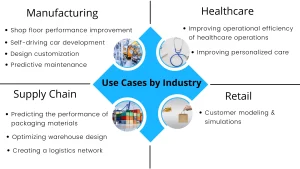There are now graphical and abstracted software programs that help simplify coding, such as integrated development environments (IDEs), text editors, documentation, or commenting tools, but also those designed to help debug and security scan.
Other code editors provide the feature of providing context-based suggestions of code completion, you know when you’ve typed out a word and hit your backspace a couple of times and each time one of the suggestions in your list pops up. Also this automatically creates a very lengthy documentation of your code clip.
Code editors
A code editor is used to edit programmes for programming. It helps take care of syntax highlighting and tabbing in a good code editor. It helps add indentation and color codes. It may also help add comments to the language carried forward. Additional options include auto-completion of the code. Editors like Emacs are able to detect errors while you are writing the program. Some of them can even debug the code or refactor it.
As any developer or programmer will tell you, a code editor is an indispensable tool of the trade. Alongside every code editor’s primary function (facilitating the writing and editing of code through a customisable interface), it provides numerous benefits over standard text editors (these are solely interfaces for viewing and editing text). Highlights include error-checking functionality, auto-completion – a feature that can predict what you might type next after viewing the pattern of a few lines of prior code (courtesy of an algorithm), thereby saving the programmer’s precious time – and functionality improvements that extend beyond the limitations of the editor itself through plug-ins, or packages of additional features.
Sublime Text, Brackets and Atom are code editors optimized to be responsive to work with large projects. Each of them enables to find files with keywords or phrases very quickly using search function. With split screen feature, many documents can open up on the screen at the same time.
Integrated development environments (IDEs)
Integrated development environments (IDEs) are programming environments that integrate all the tools you need to write and debug code. With IDEs, teams of programmers get workspaces where creativity and efficiency meet. There are many types of IDEs, but the good ones provide features that come in handy for your way of working or your project.
They usually provide an editor for writing source code for multiple programming languages in a simplified manner, and they contain a compiler that translates readable/writable source code into lower level machine code, which a computer can execute. Some IDEs come with build automation tools for facilitating quicker application development and deployment cycles. Other features include class and object browsers and class hierarchy diagrams.
SaaS IDEs can lead to a more productive development experience, as developers no longer need to install a local environment or dependencies. Development time could become shorter and ‘it worked on my computer but not yours’ types of issues will be less common. The IDE will be presented the same way, regardless of the laptop used by the team members. Intellectual property and security concerns will become irrelevant.
Text editors
A text editor, on the other hand, is a lightweight application that provides a rich command set to users, who can write files and display output of them. This is why text editors have become the go-to application for authoring code that is authored in plain text, which consists solely of characters encoded as one, two, three or four bytes, depending on the conventions of a specific character-encoding scheme.
Some provide features to speed up coding tasks, such as syntax highlighting for different programming languages, support for embedding images and audio or, say, distraction-free interfaces or automatic document folding – all resulting in faster, more productive writing.
But bundles can be used to expand the functionality of some text editors such as BBedit and Ultraedit, which give you the ability to configure your editor especially for your needs. For example, programming language bundles come loaded with features such as syntax highlighting as well as snippets to speed up the writing process. This tool is perfect for Web developers who might have to edit HTML.
Documentation tools
Documentation tools support software developers to generate and update documentation without extra effort, especially for technical documents requiring diagrams, tables, or other items. Also, different members of a team might work on the same document at the same time for better collaboration and efficiency.
What the right documentation tool for you is depends on the particular need and use case you were looking out for. It’s a context-specific decision that has a lot to do with what you want to achieve and how. The first – maybe even rule-of-thumb – step to find the right documentation solution is assessing upfront which features matter most to that particular task, say your desire for text editing, collaboration capabilities or version control systems.
Invest in a documentation tool that can serve all languages and formats with templates, customisation options, user-friendly interface, in-app walkthroughs that can take users through processes directly within the software, and generate in-app walkthroughs that can guide users directly through processes. For example, you can use ClickHelp.
Software For Coding






More Stories
Integrating Digital Twin Technology for Small-Scale Manufacturing and Logistics
The Developer’s Guide to Post-Quantum Cryptography Implementation
Smart Home Automation for Renters: Your Guide to a Smarter, Temporary Space